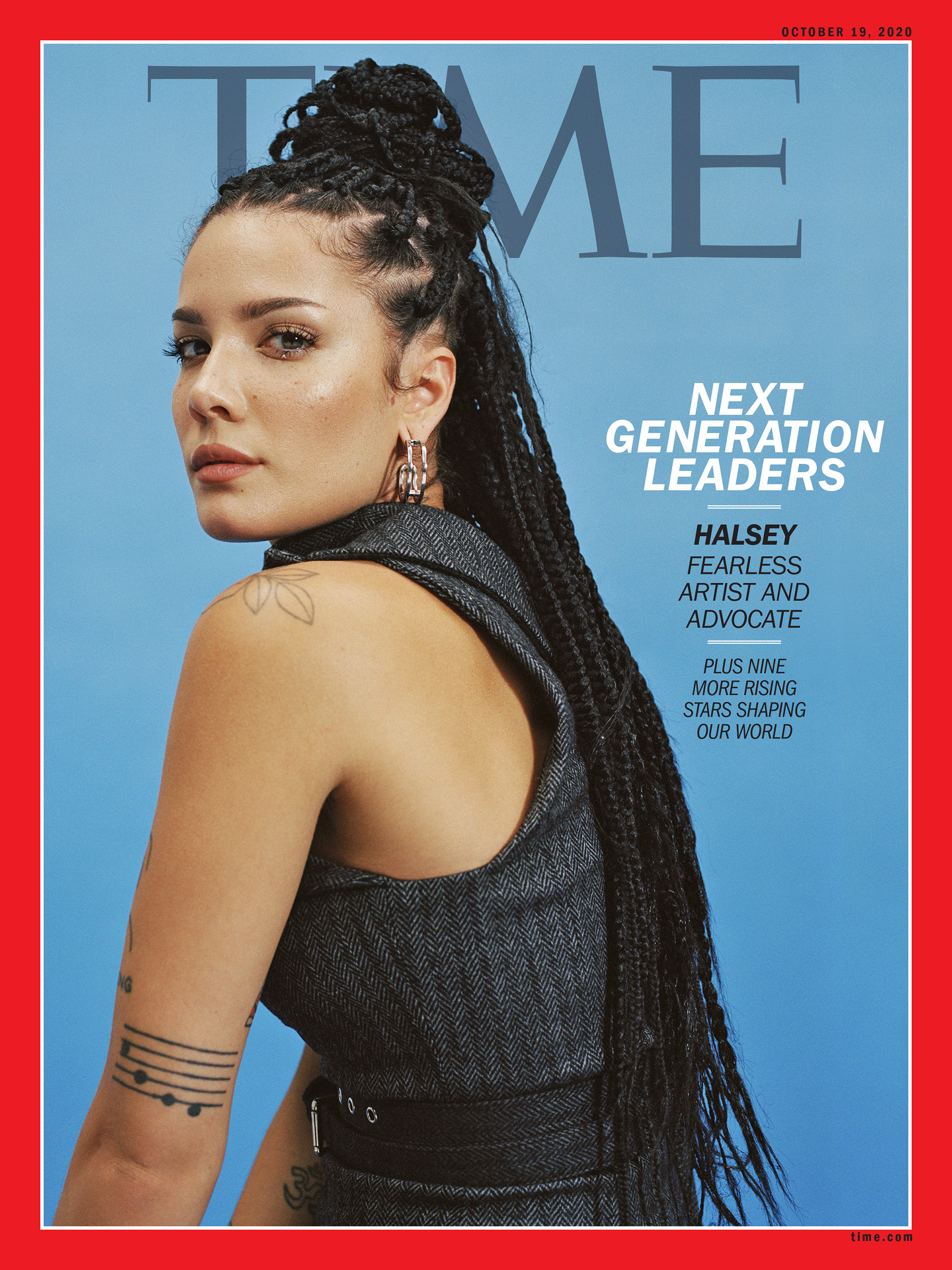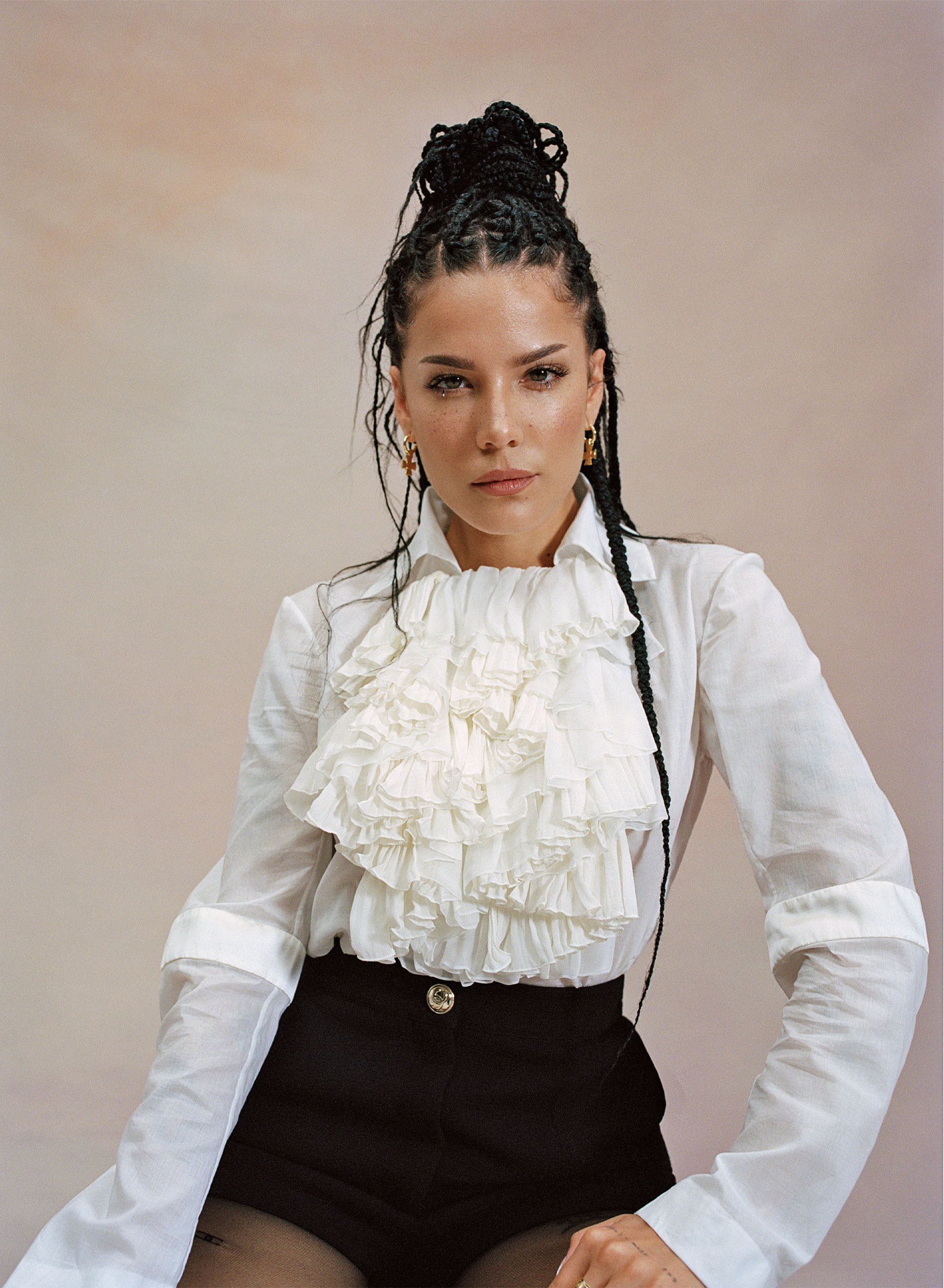Halsey wants to talk about how much she loves her gynecologist. “She’s the person I see more than anyone,” she jokes. Speaking from home in a striped pajama top, the platinum-selling singer-songwriter, born Ashley Frangipane, is just as unfiltered over Zoom as she is on social media and in her music. It was her 26th birthday the day before we speak, and in the previous 24 hours she’d dropped a music video, for her single “929,” and recorded a conversation with Senator Bernie Sanders on motivating young people to vote in the upcoming U.S. elections. But reproductive health is on her mind as well; she has endometriosis, and is ready to spread the gospel of check-ups. “I’m like the Pap-smear fairy!” she says.
Once a housing-challenged teen, Halsey is now a mega-star with a platform big enough to leverage in support of Planned Parenthood, as she’s done for years. Fans have flocked to her for her willingness to share herself publicly in all her complexity: she is biracial and bisexual, and has bipolar disorder. Her songs and videos are built on rich narratives inspired by Shakespeare and Quentin Tarantino, with titles like “Bad at Love” and “You Should Be Sad”; her concerts were festivals of collective catharsis. Now unable to tour because of corona-virus restrictions, the singer has found that activism and advocacy are another way to feel purposeful. “You vote for humanity, or you don’t,” she says. “You vote for a racist or you don’t. That’s the black and white of it to me.”

Born and raised in New Jersey to a white mother and Black father, her family, never high on the socioeconomic ladder, moved often. Her “otherness,” as she puts it, was always apparent; she remembers someone calling the police on her dad when he came to pick her up at school. At 17, Halsey moved to New York on her own. (Her name is cribbed from the Brooklyn subway stop she lived by at one point.) “In good times, I was couch surfing—in bad times, I was barely getting by,” she says. “If that meant staying awake for a couple days, or using resource centers to get things like razors, deodorant or clean water, that wasn’t beneath me.”
Three years later, she released her acclaimed debut, Badlands, kicking off a half-decade stretch of success, including monster hits “Closer” with the Chainsmokers and “Without Me,” a slew of awards and streaming records, friendships with contemporaries like Taylor Swift and a house of her own in L.A. Still: “I know who my people are,” she says, “and I work to distribute my wealth in areas where I can give back.”
This summer’s Black Lives Matter demonstrations inspired Halsey, like many other Americans, to participate. “I went to the first protest not knowing what to expect. I came home shot twice with rubber ammunition,” she says. “That was a real wake up call for me.” She went back with medical supplies, helping injured protesters with skills picked up from her EMT mom, but that proved equally traumatizing. Eventually she launched the Black Creators Funding Initiative to award $10,000 grants to Black artists. Knowing she has the privilege of passing as white, she felt conflicted about removing herself from the physical act of protest. It’s a tension she’s still navigating. “Because being mixed is a nuanced experience, the response is nuanced as well,” she says.
But bringing fans into that sort of nuance is part of what’s made her so successful. She named her latest album Manic, a nod to her mental health. During COVID-19, her relationship with her bipolar disorder changed again. “In my time at home, I started taking medication,” she says, sharing this shift for the first time. For years, she says, she avoided medication, not wanting to dampen her creativity. But during lockdown, deprived of her nightly “cocktail” of dopamine and applause, she decided to try it. “It has changed my life,” she now says.

On social media, she feels a responsibility to document these pieces of her life. She’ll reference SSRIs in an offhand response explaining a vivid dream, post an unedited selfie or go off about her frustration at seeing people in line for nightclubs. She spends time lurking on fan group chats too. “Every couple months, I’m learning about a new orientation I’ve never heard of that makes a group of people feel valid,” she says. “The best thing that I can do with my given platform is to adapt as the world adapts.”
Being high-profile in the age of social media is tricky, especially if you insist on speaking up. “There is no such thing as a perfect activist. Everyone has said something, done something wrong,” she says, not excluding herself. But to a generation jaded by misinformation, her transparency in sharing even the sharpest edges of identity and growth feels like a safe space around which to connect. She doesn’t take it for granted—and she’s all right with doing it imperfectly. “I fall in between two chairs,” she says, laughing, “which means sometimes, I end up on the floor.”
- The 100 Most Influential People of 2024
- The Revolution of Yulia Navalnaya
- 6 Compliments That Land Every Time
- Stop Looking for Your Forever Home
- If You're Dating Right Now, You're Brave: Column
- The AI That Could Heal a Divided Internet
- Fallout Is a Brilliant Model for the Future of Video Game Adaptations
- Want Weekly Recs on What to Watch, Read, and More? Sign Up for Worth Your Time